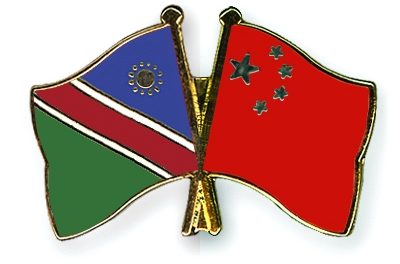
Rail – Africa’s hope to better regional inter-connectivity

As Africa realizes an integrated transport system remains vital to the continent, Governments are feverishly working to push for further railway development. In addition to the continent housing the largest number of landlocked countries in the world, sixteen countries in Africa do not have cross-border railway lines. The national railway networks in sub-Saharan Africa are mostly independent of each other except some parts in the Eastern and Southern African rail systems, which are interconnected.
In Africa, transport networks follow a clear path; mine to port such as the case of in Namibia. This is largely due to the mines pushing for this link. Manager for the Logistics Hub Project at the Walvis Bay Corridor Group (WBCG), Clive Smith, explained that Namibia is actively working to contribute to the plight of regional inter-connectivity.
“Transport volumes in the southern African region are increasing and Namibia is rapidly developing into a highly stable gateway and transit hub for neighbouring countries. As a nation, we are undertaking several infrastructure projects such as railway upgrades and the expansion of the Port of Walvis Bay”, he emphasized.
As strong catalysts of economic development that opens up access to markets and facilitates intra-continental trade, rail growth is therefore essential. Reiterating rail’s advantages, Jack Dempsey from Dempsey Multi-Konsult, a leading local company in railway engineering states that facilitating trade via a rail border crossing system, offers a more secure clearance process.
“It also provides a higher level of freight security than road systems. High volumes of freight over long distances are transported at a lower cost on rail. As intra-continental trade in Africa is only 17% of the total trade in the world, rail can be used to increase this,”he added.
After Namibia gained independence, roads were favoured because of the lack of interconnectivity derived from rail connections. However, as cargo tonnage is expected to increase, freight should increase the ratio of cargo travelling from road to rail, which will help minimize the extensive and costly deterioration of roads in the country.
Rail is the most suited mode for the transportation of bulky freight over long distances. It has great potential to transport, amongst other things, agricultural inputs and outputs, industrial raw materials and manufactured goods and minerals as well as passengers, in a low cost way. An efficient freight rail is key to maintaining international attractiveness not just for heavy export commodities and long distance continental movements but also for production of high value products like automobiles.
According to the Permanent Secretary of the Ministry of Works and Transport, Willem Goeiemann, Namibia is making sure its inter-regional rail network assists in the economic and social integrations of the region in order to effectively participate in an increasingly competitive global economy.
“There are several vital transportation infrastructure projects in the country that are underway. The commencement of the Grootfontein-Rundu-Katima Mulilo railway line is one such project that seeks to improve trade via the Walvis Bay Port to countries such as Zambia, Zimbabwe, Malawi and the Democratic Republic of Congo (DRC)”, he stated.
Other projects include the construction of the Trans Kalahari Railway Line (TKR), which is a bilateral project between the Governments of the Republics of Namibia and Botswana. This railway line will transport coal to the overseas market. The railway line between Sandverhaar-Bucholzbrunn is to be rehabilitated, this includes the creation of a sand tunnel on the 5 km section outside the Port of Luderitz to help combat the problem of desert sand on the railway line. In an effort to allow the movement of Manganese from the mines in the Northern Cape to the international markets via the Port of Luderitz, the Keetmanshoop – Northern Cape Province Railway line is also due for construction. The Walvis Bay – Tsumeb Railway line is also set to receive an upgrade.
Goeieman further said his commitment to this medium as it remains essential for trade, industrialization, socioeconomic development and regional integration.
“To complete missing portions of regional transportation corridors between Namibia and its neighbours with the Port of Walvis Bay, Namibia can play a greater role in the Southern Africa Development Community (SADC) as a Logistics Nation,” he said.











































